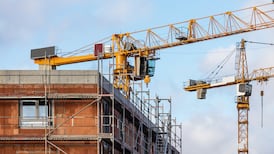Irish tourism suffered this summer as Europeans flocked to the sun following two years of Covid travel curbs, according to Aer Lingus.
Northern Europeans preferred sun holidays in 2022 after being unable to take them for two years, the airline said in a comment on Dublin passenger charges published this week.
“Inbound demand suffered as a result but this will likely revert to trend in 2023,” Aer Lingus added.
The airline also maintained that a shortage of accommodation tied to the war in Ukraine slowed demand from Europe.
READ MORE
Other organisations also confirmed that visitor numbers so far in 2022 lag 2019, the year before governments grounded or restricted travel to slow Covid-19′s spread.
The Irish Tourism Industry Council’s (ITIC) most recent update calculates that visitors from continental Europe were down 16 per cent on 2019 up to the end of August at 2.26 million.
British holidaymakers
Over the same eight months, 1.94 million British tourists travelled here, 24 per cent fewer than three years ago. North-American numbers fell 22 per cent to 1.3 million up to the end of August.
Overall, the country lured 5.8 million tourists in the first eight months of the year, 21 per cent less than during the same period in 2019, according to the ITIC.
Figures produced by the Central Statistics Office (CSO) show that August arrivals on air and sea continental routes were down 5 per cent on the same month in 2019.
Total August arrivals from all departure points were 10 per cent down on the same month three years ago, according to the office.
The CSO figures include both returning Irish residents and incoming international visitors.
Aer Lingus says that limits on Dublin’s capacity this year are unlikely to be repeated and forecasts that the airport will handle a record 35.2 million passengers in 2026.
The airline expected to have 84 per cent of its 2019 seats available by August, below the 90 per cent at which the airline aimed at the start of this year. That broke down as 83 per cent of short-haul and 88 per cent of long-haul.
“Capacity would have been higher if not for constraints on aircraft reactivation and recruitment/training of crew and ground staff,” says the airline.
















